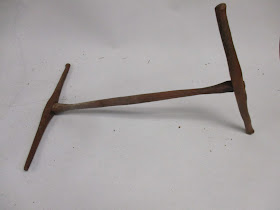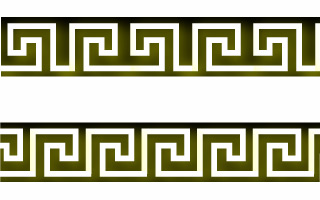Don't get your hackles up if you don't understand. A lot of time has passed since then.
Recognize this?
This item can be found on the top shelf of a new exhibit we installed this month near the main entrance to the Conway Public library.
While this item may seem enigmatic to many young people today, not long ago this was a familiar item and only a generation or two before would have been used by around half the population including young boys. It has a very interesting tradition in art, literature, poetry, and song as well. We will get back to the item above in a moment, but let's turn to the seasonal cycle of life mentioned above.
In the relatively recent past, clothes were made with all natural materials: flax, cotton, wool and leather. Plant based clothing crops such as cotton and linen from flax were planted in the spring and baby animals were born in the spring and sheep were shorn in the spring and their fleece processed into wool.
These tools and processes are so unfamiliar to many of us today, they have found themselves in books about "The Forgotten Arts and Crafts" found at the library under Dewey Decimal number 680 Sey.
In this blog we will only cover a few of the tools in this small exhibit. With this display, we have teamed up with the Conway Historical Society who graciously loaned us some artifacts to help tell the story. Some of the larger items that were part of the textile process such as spinning wheels and looms are simply too large to display here.
If you would like the Curator of the Conway Public Library’s Henney History Room to present a free outreach program on this subject and bring a larger collection of items to demonstrate to your school or community group please contact one of our librarians.
The Conway Public Library and its Henney History Room have a lot of resources to help you learn on your own as well. We have hobby type books that can help you learn to do some of these practices yourself and perhaps become more self-sufficient and certainly have fun with it.
I used the phrase about "hackles" earlier. This represents the fascinating phenomenon in which a tool turns into an aphorism. This is a hackle with its cover on.
These are the hackles when they are up and the protective cover is removed.
So, you can see where the phrase comes from. Check our copy of the OED (Oxford English Dictionary) for details on the word's early usage.
So what is the item in the first picture above? It too has an interesting connection too the English language. It is called a "niddy noddy." It was featured in an early folk song,
Niddy-noddy,
niddy-noddy,
two heads
one body.
‘Tis one, tain’t one,
t’will be one soon.
‘Tis two, tain’t two,
t’will be two soon.
‘Tis three, tain’t three,
t’will be three soon.
(etc.)
An early painting by Leonardo DaVinci featured a niddy noddy. See this link.
In future blogs we will explore more about this exhibit and this subject.



































